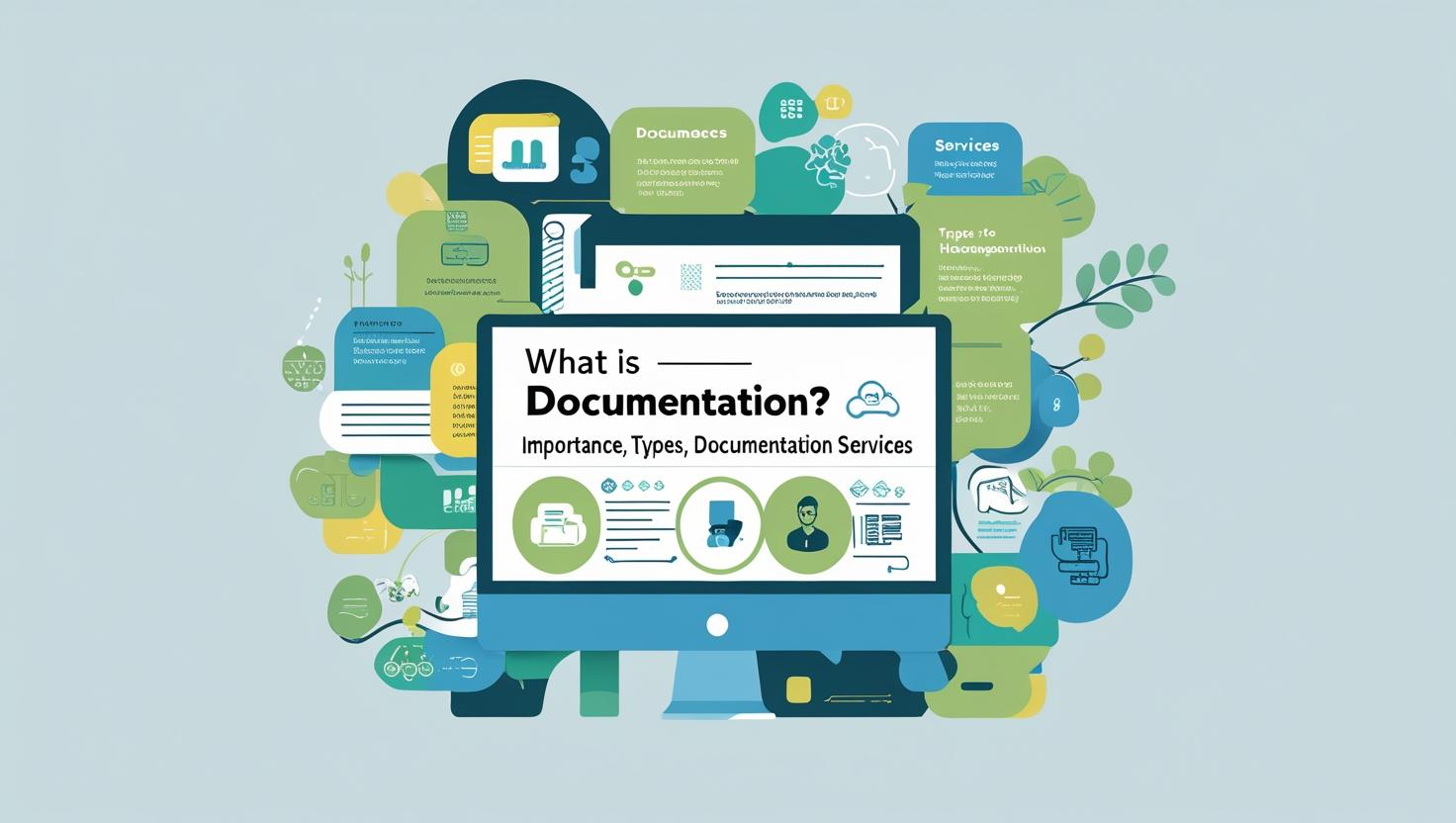
What is documentation? Some might say it’s just a collection of words on paper that satisfy a legal mandate. But a technical writer—a professional who knows firsthand the impact documentation can have on employees, customers, and even organizational goals—will tell you that documentation is a critical communication tool.
Consider this tool’s relevance across different contexts:
- In business, documentation formalizes processes, strategies, and agreements, ensuring shared understanding and operational continuity.
- In technical spaces, documentation translates complex systems and code into accessible guides, enabling development, maintenance, and user adoption.
- In the legal sphere, documentation serves as critical evidence, safeguarding compliance and establishing definitive records of transactions and decisions.
Regardless of the context, effective documentation is more than just writing—it’s the intentional act of capturing, structuring, and organizing information to facilitate understanding, mitigate ambiguity, and preserve institutional knowledge.
Keep reading to dig deeper into the world of documentation, including types, services, tools, and best practices, among other key topics.
Why is Documentation Important?
Documentation is paramount for organizational success and offers a multitude of benefits:
- Reduced errors. Clear documentation minimizes misunderstandings and mistakes by providing accurate, accessible information.
- Increased productivity. Ready access to documented processes and solutions accelerates tasks and reduces time spent searching for answers.
- Greater accountability. Documented roles, responsibilities, and decisions create transparency and clearly identify ownership.
- Training support. Comprehensive guides and manuals facilitate efficient onboarding, instruction, and continuous skill development for employees.
- Consistent compliance. Detailed records are essential for meeting regulatory requirements and demonstrating adherence to standards.
Types of Documentation
Documentation varies significantly based on audience and purpose. It can be internal, for employees (e.g., HR policies, process manuals, training materials), or external, for customers/public (e.g., user guides, marketing brochures, legal disclaimers).
Let’s look at documentation by use case:
- User documentation (external) includes FAQs, tutorials, troubleshooting guides for product users, and the like.
- Business documentation (internal) includes business plans, reports, meeting minutes, financial statements, standard operating procedures (SOPs) for organizational operations, and so on.
- Technical documentation (primarily internal, some external) includes equipment operation and maintenance manuals, application programming interface (API) docs, system architecture, code comments, specifications, maintenance guides for developers/engineers, etc.
- Legal documentation (internal and external) includes, for example, contracts, agreements, policies, compliance records, and disclaimers for legal validity and adherence.
Alternatively, consider the specific documentation needs of organizational departments:
- HR often uses employee handbooks and onboarding docs.
- IT/development needs technical specs, API docs, and system guides.
- Sales and marketing care about product sheets, case studies, and proposals.
- Legal makes use of contracts and regulatory filings.
- Operations lives by SOPs and process workflows.
What are Documentation Services?
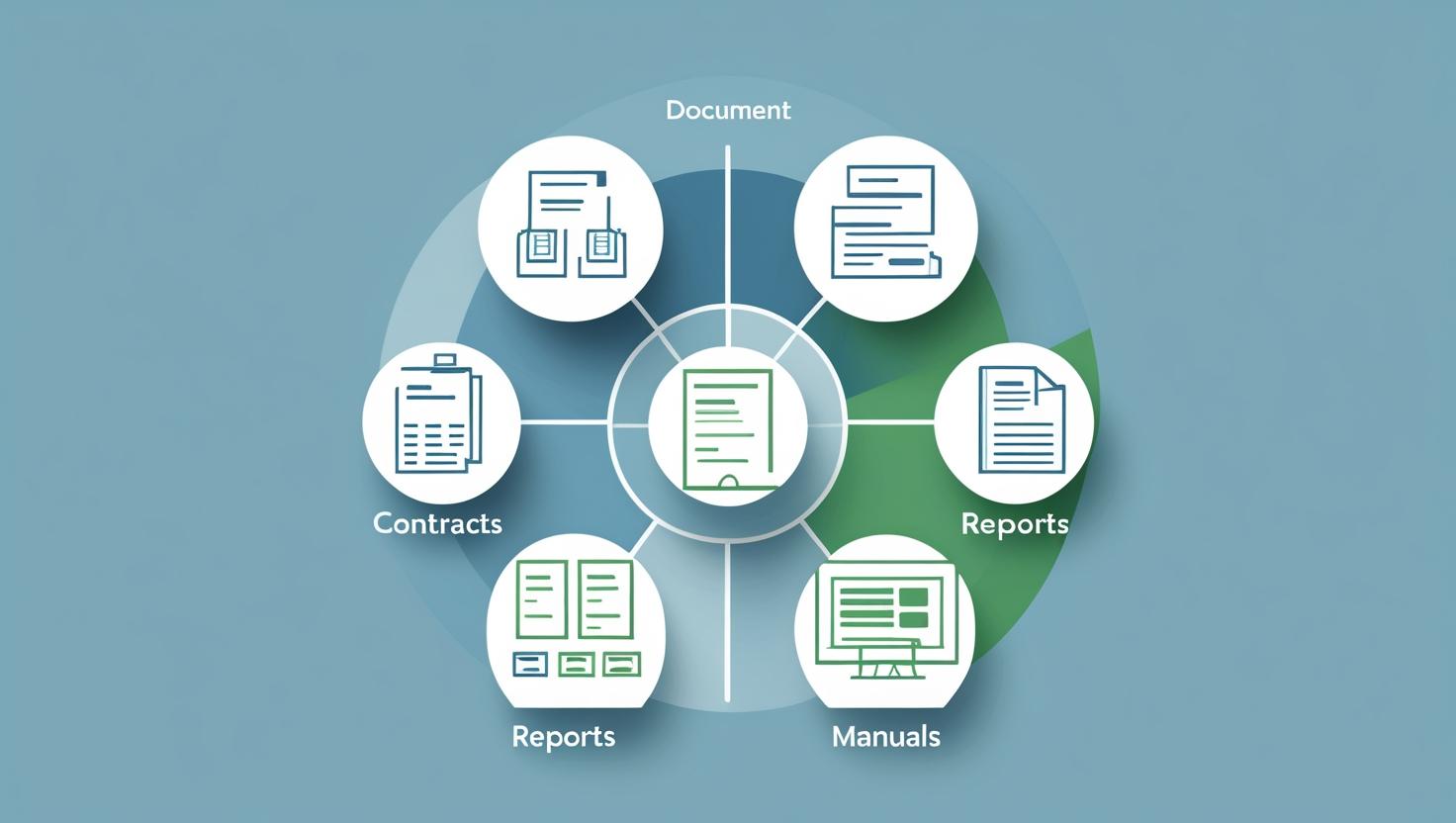
Documentation services encompass professional offerings that create, manage, and optimize an organization’s information assets. These can be delivered either in-house, by dedicated internal teams, or outsourced to specialized agencies and freelancers.
Such services typically provide content lifecycle support, from planning and creation to publishing, maintenance, and archiving. Agencies and consulting firms often employ expert technical writers, instructional designers, and content strategists.
Additionally, software as a service (SaaS) platforms also offer integrated tools for streamlined documentation creation, version control, collaboration, and knowledge base management, empowering self-service documentation.
Managed vs. Unmanaged Documentation Services
The choice between managed (outsourced) and unmanaged (in-house) documentation services depends on your organization’s resources, expertise, and strategic goals.
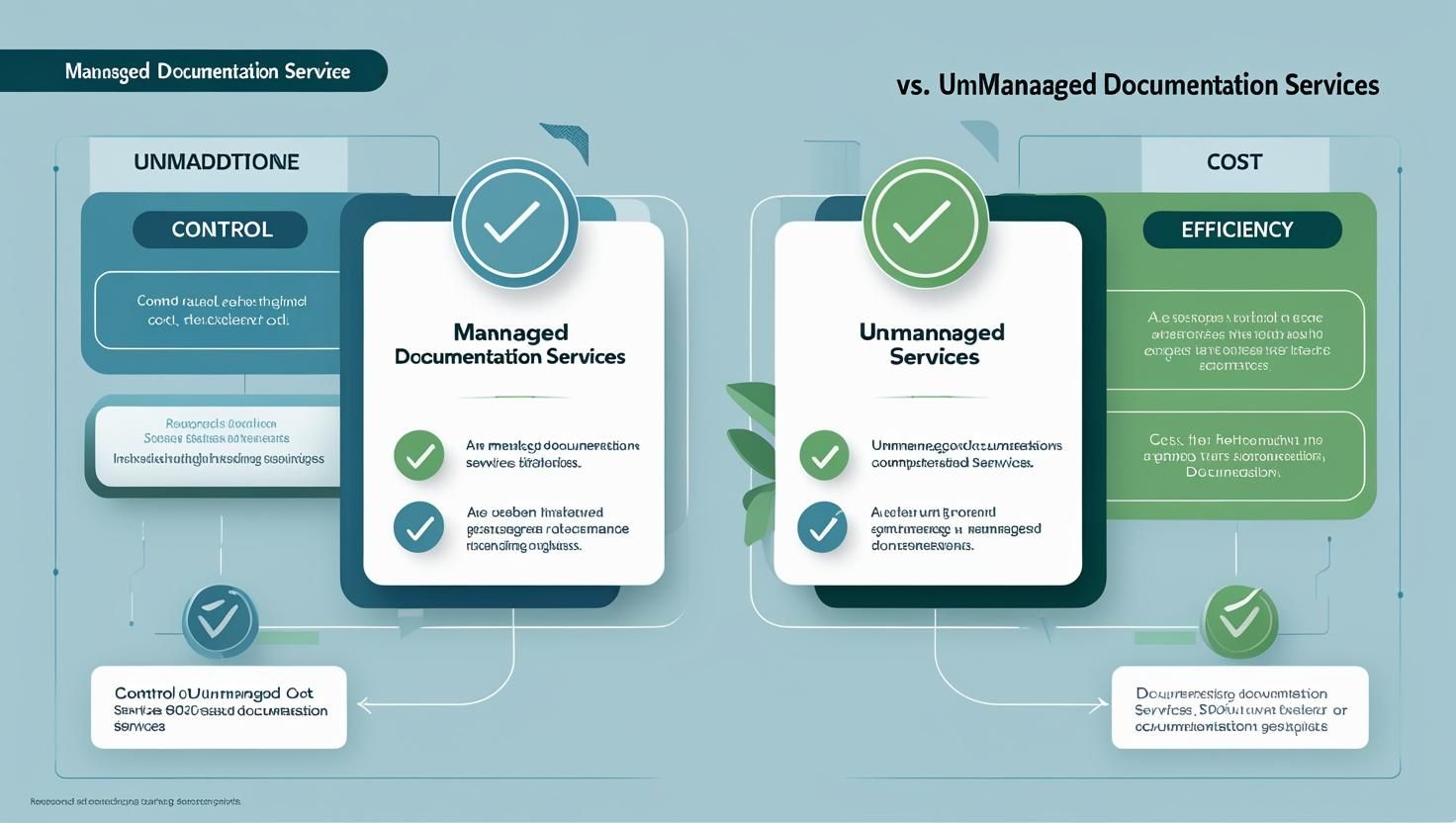
Managed Documentation Services (Outsourced)
- Pros: Access to specialized expertise, scalability for fluctuating needs, faster turnaround, focus on core business, lower overhead costs (e.g., no salaries, no benefits, no infrastructure).
- Cons: Less direct control, potential communication hurdles, intellectual property concerns (mitigated by NDAs and other legal agreements).
- Use cases: Lacking in-house technical writers, urgent projects, specialized documentation (e.g., legal compliance, API documentation).
- Integration: Requires clear communication channels, defined scope of work, integration with internal project management and review workflows.
Unmanaged Documentation Services (In-House)
- Pros: Direct control and oversight, cultural alignment, immediate communication.
- Cons: Limited in-house expertise, slower scalability, potential for resource strain, higher fixed costs (e.g., salaries, benefits, training, tools).
- Use Cases: Organizations with consistent documentation needs, complex proprietary information, strong internal knowledge-sharing culture.
- Integration: Seamless integration with existing internal tools and processes.
Legal, Regulatory, and Compliance Documentation Services
Legal, regulatory, and compliance documentation services are crucial for organizations operating in regulated environments. These services focus on creating and managing documents that adhere to specific legal and standardization frameworks such as:
- GDPR for data privacy in the European Union.
- HIPAA for healthcare data privacy in the U.S.
- SOX for corporate financial reporting in the U.S.
- ISO 9001 for controlling documented information globally.
The primary goal of such services is risk management, ensuring that businesses avoid legal liabilities, penalties, and reputational damage from non-compliance. This includes preparing organizations for audit readiness by maintaining meticulous records of policies, procedures, consents, and incident reports.
Software and IT Documentation Services
Software and IT documentation services are vital for bridging the gap between complex technological systems and their users or maintainers. These services provide clear, concise information for technical and software teams, including:
- API documentation that details how to interact with software components.
- Codebase documentation that explains code structure and logic.
- Infrastructure mapping that diagrams and describes network and server configurations.
In a DevOps documentation lifecycle, documentation is continuously updated alongside development and operations, ensuring that changes to code or infrastructure are immediately reflected in corresponding guides to facilitate smooth development, deployment, and maintenance.
Services in this technical setting also extend to user onboarding guides and tutorials, enabling end-users to quickly understand and effectively utilize software applications, reducing support requests and improving overall user experience.
Who Uses Documentation Services?
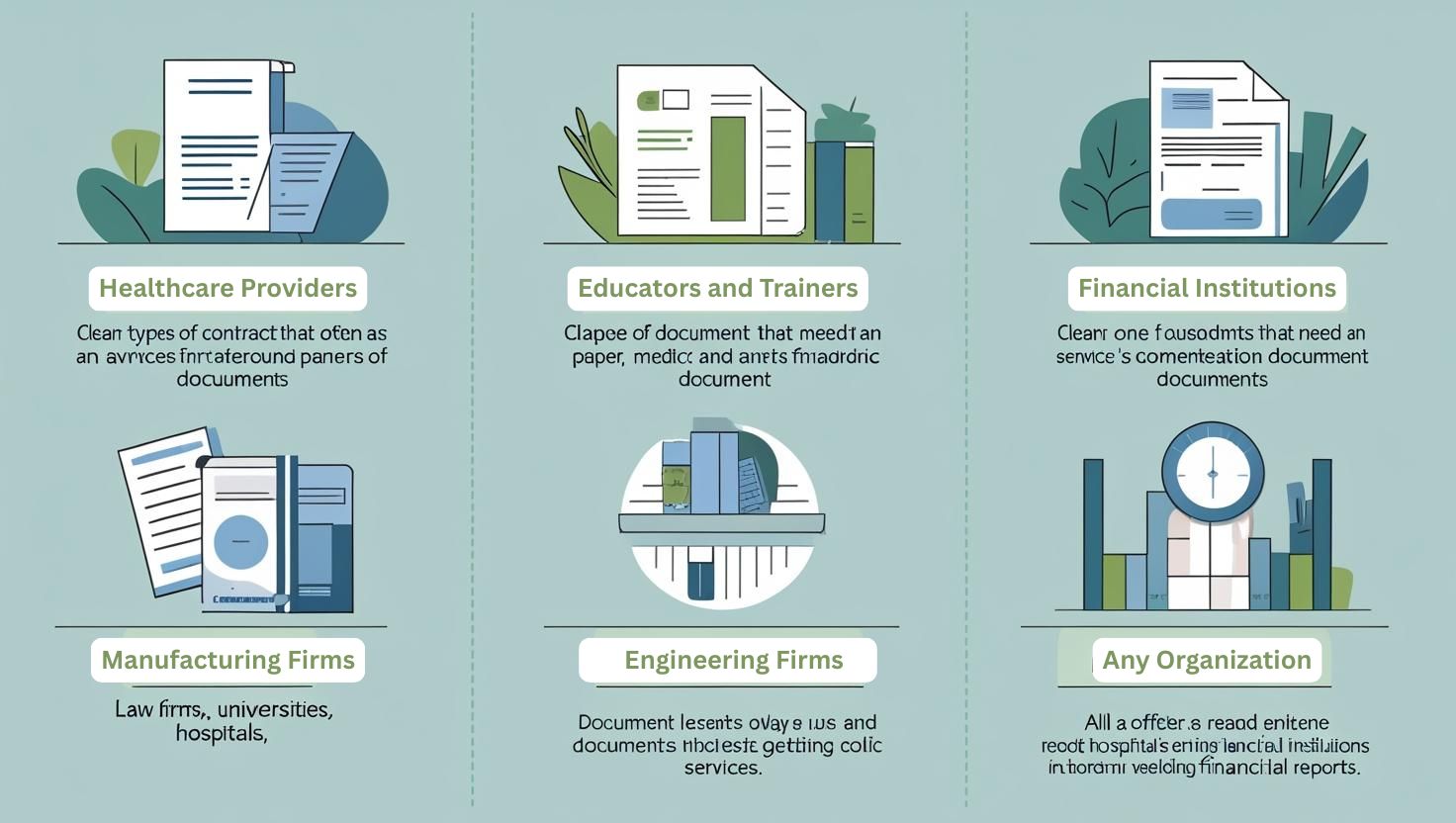
Documentation services are utilized across diverse industries and roles, serving both internal operational needs and client-facing engagements:
- Healthcare providers use documentation for administrative procedures (internal) as well as patient education materials (client-facing).
- Educators and trainers use documentation for creating learning materials, course guides, and training modules to support knowledge transfer.
- Financial institutions rely on documentation for financial reporting, risk assessments, regulatory filings, and customer agreement processing.
- Manufacturing and engineering firms use documentation for product specifications, operational procedures, and maintenance manuals to ensure quality and safety.
- Any organization with internal processes benefits from documentation that helps capture institutional knowledge, support onboarding, and ensure consistent operations.
What Kinds of Documents Require Documentation Services?
While documentation services can apply to any recordable information, technical documents frequently demand specialized attention. Examples of technical documents include user manuals, installation guides, API documentation, system architecture diagrams, and troubleshooting guides.
Here are a few documents that benefit from specialized knowledge and expertise:
- Product manuals are comprehensive guides for using, installing, and maintaining a product.
- Repair manuals are detailed instructions for diagnosing and fixing issues in a product or system.
- User guides are concise documents offering clear instructions to help users utilize a product or service effectively.
- Project plans are all-inclusive outlines of objectives, tasks, timelines, and resources for successful execution.
- Business standards are established norms and guidelines that help ensure quality, consistency, and ethical behavior in an organization.
- Test schedules are detailed plans outlining the sequence, timing, and duration of testing activities in a project or software development cycle.
- Market requirements documentation includes records outlining a product’s specific features and functionalities as gathered from the target market.
- White papers are authoritative documents that present a problem, propose solutions, and provide in-depth insights on a specific topic.
- Case studies are in-depth analyses of real-life situations used to draw lessons and provide insights for similar scenarios.
- Requests for proposals (RFPs) are formal documents inviting vendors to submit detailed offers and responses outlining solutions and terms to meet those requirements.
Documentation Tools and Platforms
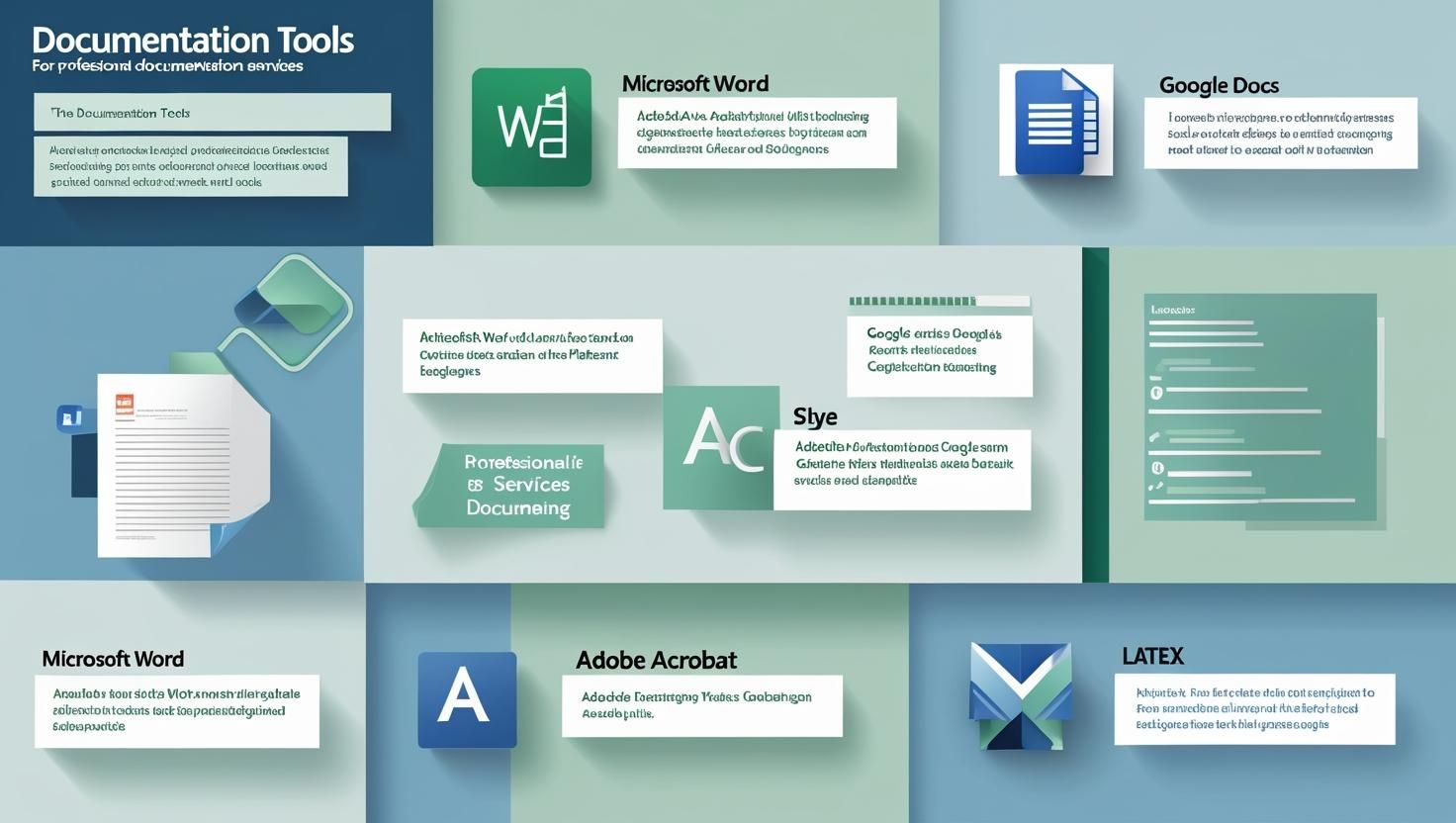
Effective documentation relies on a robust ecosystem of digital tools:
- Knowledge base platforms such as Confluence, Notion, and Document360 provide centralized repositories for organizing, searching, and accessing information, often with features for internal and external audiences.
- Markdown editors like Dillinger and Typora offer a simple yet useful way to write and format content, focusing on text.
- Collaboration tools such as Google Docs and Microsoft 365 facilitate real-time co-authoring and feedback.
- Version control systems like Git and platforms with built-in versioning features track changes, enable rollbacks, and manage multiple authors seamlessly.
Best Practices for Writing Documentation
Creating effective documentation requires a user-centered approach. The goal is to make complex information easily digestible and actionable for the intended audience.
Here are a few tips on how to write documentation that helps achieve your organizational goals:
- Write for the user. Ensure everything you write considers how the user will consume and employ what you write. Avoid jargon, acronyms, and internal technical terms unless clearly defined. Focus on what the user needs to do or understand, not just what you want to tell them.
- Be clear and concise. Use plain language, short sentences, and active voice. Get straight to the point and eliminate unnecessary words or repetitive information.
- Organize information logically. Break down content into logical sections with clear headings, subheadings, and a table of contents for easy navigation. Use bullet points and numbered lists for steps and key information.
- Incorporate visuals. Ensure visuals are relevant and clearly annotated. Diagrams, screenshots, flowcharts, and embedded videos can often explain complex concepts far more effectively than text alone.
- Establish style guides and templates. Develop a style guide for your department or entire organization to maintain consistency in tone, terminology, formatting, and structure across all documentation—this improves readability and professionalism. Create templates to streamline document creation and maintain uniformity.
- Regularly review and update documents. Remember that documentation is a living asset. Routinely review and update content to ensure accuracy, relevance, and alignment with any changes in systems, processes, or regulations.
Measuring Documentation Effectiveness
Measuring documentation effectiveness is crucial for ensuring it serves its purpose and supporting continuous improvement. Before measuring, clarify what success looks like for each documentation type and how you will track that success.
For example, you may track:
- Training time. If training is taking too long, you may track the reduction in the number of days (or weeks) needed to train new employees after creating or improving your training materials.
- Process completion time. If you’re trying to make a process more efficient, you could compare the time required to complete it before and after incorporation of SOP documentation.
- Self-service success rate. If you’ve created FAQs or knowledge base content, you could monitor the percentage of users who solve their problems independently using this documentation.
- User feedback. In-document feedback forms (e.g., “Was this helpful?”), surveys, ratings, and comments directly from users provide qualitative insights into the clarity, accuracy, and completeness of your documentation.
Regularly review your collected data to identify common pain points, content gaps, or areas of confusion. Update and refine your documentation accordingly, whether that’s rewriting sections, adding visuals, or creating new content to address missing information.
Address Your Documentation Needs with EDC
Whether you need a single technical writer for an ad-hoc documentation project or a team of consultants to produce a complete line of documents, EDC’s managed documentation services ensure your organization receives the highest quality business, technical, and legal documentation.
Plus, our clients work closely with an engagement manager from one of our 30 local offices for the entire length of your project at no additional cost.
Contact us at (800) 221-0093 or [email protected] to get started.
FAQs
What is documentation in business and why is it important?
Documentation in business refers to structured records of processes, policies, and decisions. It ensures operational continuity, reduces errors, and supports compliance and accountability.
What are the different types of documentation?
Common types include user documentation, technical documentation, legal documentation, and business documentation like SOPs and internal reports.
How do you write effective documentation?
Effective documentation is user-focused, clear, concise, logically structured, and regularly updated. It may include visuals, headings, and templates to improve readability.
What is the role of a documentation service provider?
A documentation service provider helps organizations create, manage, and maintain accurate and accessible documents for internal use or external compliance.
What tools are used for documentation?
Popular tools include Confluence, Notion, Git, Microsoft 365, and Markdown editors like Typora. These support version control, collaboration, and accessibility.
Why is documentation essential for compliance?
Documentation ensures adherence to legal standards like GDPR, HIPAA, or ISO 9001, helping organizations avoid penalties and maintain audit readiness.
What’s the difference between technical and user documentation?
Technical documentation targets developers or internal teams, while user documentation helps end-users understand and use a product or service.
Read more about: How to Write a Business Requirements Document
